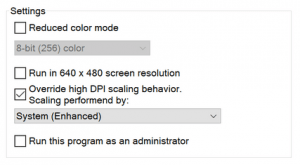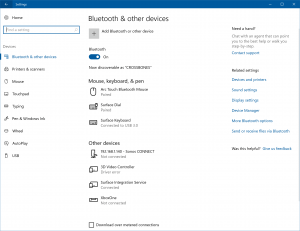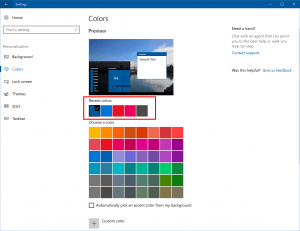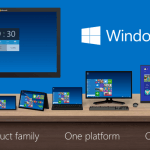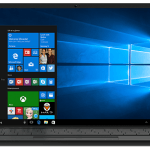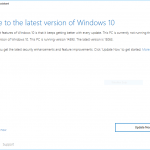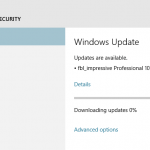It has been a while since Microsoft released official preview build of upcoming Windows 10 Creators Update, widely expected to be version 1703, scheduled to release on April 2017. The last official Windows Insider preview release was Windows 10 Build 14986 released in early December 2016, even though Windows 10 Build 14997 leaked over the Christmas holiday.
Finally, Microsoft is releasing Windows 10 Build 15002 on January 9th, 2017, after few days delay. Microsoft originally planned to push Windows 10 Build 15002 to Windows Insiders, but the build’s base image was pulled due to upgrade issues. In fact, Windows 10 Build 15002 was already ‘leaked’ when it was downloaded from Microsoft’s server before it was pulled, and later published to Internet ahead of official release.
Windows 10 Insider Preview Build 15002 for PC is released to Windows Insiders in the Fast ring. The new build included plenty of new features before Windows 10 Creators Update is ‘feature-locked’, probably by end of January 2017.
You can download and install Windows 10 Build 15002 via Windows Update. Microsoft plans to has release the installation media for Windows 10 Build 15002 in ISO format soon on mid January 2017, as many new features in the build involved setup or installation, so you can now download an Windows 10 Build 15002 ISO image from https://www.microsoft.com/en-us/software-download/windowsinsiderpreviewadvanced.
The following Windows 10 Insider Preview Build 15002 ISO images are available:
- Windows 10 Insider Preview
- Windows 10 Insider Preview Enterprise is built to address the needs of large and midsize organizations, and comes with the management tools that IT administrators need.
- Windows 10 Insider Preview Education is built for students and faculty, and comes with the management tools that IT administrators need.
- Windows 10 Insider Preview Home Single Language is built for consumers in emerging markets and can only run a single language.
- Windows 10 Insider Preview Home China is built for consumers in China and is delivered in Simplified Chinese
Both 32-bit and 64-bit version of Windows 10 and for multiple languages is available for selection to download. Do note that a valid Windows 10 license (either via digital license available on a device that has been previously activated with Windows 10 or with a Windows 10 product key) in order to activate the installed Windows 10 Insider Preview build.
Update: Windows 10 Build 15007
According to Microsoft, the new features include:
- Microsoft Edge Updates
Tab preview bar: Tab preview bar allows you to easily glance at a visual preview of every tab you have open without leaving your page. You can scroll through the list with touch, mouse wheel, or a touchpad. Just click the chevron icon next to your tabs to get started.
Set these tabs aside: Two new buttons next to your tabs in Microsoft Edge to help you quickly manage all your tabs without losing your flow.
Jump List for Microsoft Edge: You can now launch a new window or new InPrivate window for Microsoft Edge straight from its Taskbar icon.
Component UI: New UWP architecture for Microsoft Edge’s multi-process model, including a new visual tree and new input model.
Flash Click-to-Run: Microsoft Edge will now block untrusted Flash content by default until the user explicitly chooses to play it.
Web Payments: Microsoft Edge now has preview support for the new Payment Request API, which allows sites to make checkout easier using the payment and shipping preferences stored in your Microsoft Wallet.
- Start and Shell Improvements
Tile Folders in Start: Group your Start tiles into folders.
Updated Windows Share experience: New Windows Share experience will pop-up the new share flyout within the app you are sharing from and give you a list of applications you can share to. This list changes based on your usage. The WIN + H hotkey, used in the old Windows share experience, has been removed.
Capture a region of your screen: Use Win + Shift + S to capture a region of your screen and copy it to the clipboard for pasting into OneNote for Windows 10 or any other app.
Improved high-DPI support for desktop apps: Microsoft Management Console (MMC) and Performance Monitor (Perfmon) updated to be more crisp on high-DPI PCs. And you can enable them yourself for other GDI-based applications, too! To do this, you’ll need to find the application’s .exe file, right-click on it, and select Properties. Go to the Compatibility tab, and turn on System (Enhanced) DPI scaling, and click OK. This setting overrides the way that applications handle DPI scaling (which sometimes uses bitmap stretching and can result in applications rendering blurry) and forces them to be scaled by Windows. The setting that was previously labeled Disable display scaling on high DPI settings is now referred to as Application scaling.
Smooth Window Resize: Improved performance and smoothness when resizing GDI-based Desktop applications (such as File Explorer, Task Manager, and Notepad) and UWP apps (such as Groove Music and Outlook Mail).
Desktop Icon Placement and Scaling Improvements: When you change your multi-monitor configuration, dock/undock your device, project your display, add or remove monitors, or otherwise make changes that affect the icon scaling, you should see an improvement in how the system adjusts the layout of your desktop icons.
Simplified and faster VPN access: Updated Network flyout – after selecting a VPN, you can now click connect from within the flyout rather needing to open VPN Settings.
Improved sign-in dialog for apps: New sign-in dialog shows your available Microsoft, Work, or School accounts and gives you the ability to add new accounts to Windows.
Lunar Calendar support for the Taskbar: Those of you who follow the Simplified or Traditional Chinese lunar calendar can now use the taskbar calendar to quickly check the lunar date alongside the current Gregorian date. Special holidays are called out in accent-colored text. Go to Settings > Time & Language > Date & Time to pick which additional calendar you’d like to see.
Improving notification experience for app developers and everyone: Provide app developers a way to create custom subgroups for their notifications in Action Center. Also, to address issues where notifications might have the wrong time stamp (for example, if your PC was asleep when you received a cross-device notification from your phone), app developers can override the notification timestamp.
- Windows Ink Improvements – Windows Ink pen, pencil and highlighter control now visually indicate which color is selected. And new point erase added to the Windows Ink Workspace’s Sketchpad and Screen Sketch.
- Cortana improvements
Easier discovery of Cortana’s app-specific commands: Bubble up suggested commands as you type the app name in Cortana. Clicking a particular suggestion launches the app with that command. Once you know the command, you can also trigger it by simply saying it to Cortana.
More recurrence options for Reminders: New option to set recurring time-based Cortana Reminders for “Every Month” or “Every Year”.
Keyboard shortcut change for invoking Cortana: The keyboard shortcut to invoke Cortana in listening mode is changing to WIN + C. This shortcut will be off by default. WIN + Shift + C will be used to open the App Charms menu, seen in the title bar of Windows 8 apps.
- Accessibility Improvements
A more inclusive experience out of the box: First time setup, user can listen and respond to Cortana verbally (when asked questions) to further simplify and make the setup process more accessible to even more people.
Narrator support for WinPE and WinRE: Supports the use with Narrator from WinPE for installing Windows as well as troubleshooting options with WinRE.
Braille support in Windows: A new button that offers the ability to download support for braille via Settings > Ease of Access > Narrator.
Narrator keyboard shortcut is changing: To help reduce accidental launch of Windows Narrator, hotkeys are to be more intentional from WIN + Enter to Ctrl + WIN + Enter.
Narrator Improvements: Improvements to Narrator for navigation when using Scan mode. You can now navigate to headings of a specific level by typing the number of the heading level you want e.g. 1 for the next heading level 1. Add shift for the previous heading. In addition, Narrator’s Scan Mode now allows you to press Home and End to move to the start and end of a line of text respectively when pressed. Finally, when in Scan Mode you can press Ctrl + Home and Ctrl + End to move to the start or end of the web page or other content you are reading.
Improved legibility for UWP apps in high contrast: Updated XAML framework to display an opaque layer behind the text and coerce semi-transparent UI to be fully opaque.
- Windows Defender Improvements
- New options to run quick, advanced, or full scans.
- Device performance and health scans give you a report on your PC’s health.
- Family options has visual improvements and links you to great content/applications on the web to set up a family or view device information.
- Settings pages to change configuration on the app or learn more about it
- General bug fixes and improvements.
- Refresh Windows on-demand in Windows Defender. If your PC is running slow, crashes or is unable to update your PC, this option may help you. This option starts fresh by reinstalling and updating Windows, which will remove most of your apps but keep your personal files and some Windows settings.
- Settings Improvements
Helping you find the setting you need in Settings: Settings pages now contain additional information on the right or bottom (depending on the window size) providing links to support, feedback, and any other related settings if available; app related settings moved out of System into a new category called Apps; the header on the landing page of each Settings category will now stay in place as you pan the page.
Updated device settings: The new device settings experience combines the Bluetooth and Connected devices pages to offer a single place to manage your devices/peripherals.
New Display Settings options: In the refreshed display page, numerous changes have been made to make the page clearer and easier to use, including now being able to change resolution straight from the main Display Settings page.
Lower Blue Light: Windows can now automatically lower the amount of blue light emitted from your PC at night. Settings to turn this functionality on or off and use a local sunset and sunrise or custom schedule are in Settings -> System -> Display. If you need to quickly override the schedule or always want manual control, you can enable this quick action in Settings->Notifications & actions.
New per app Surface Dial settings: App developers have the option of providing custom tools for the Surface Dial when using it within their app. In addition to this, Windows Insiders with Surface Dials will now be able to customize the default tool set for individual apps starting with this build. Setup the keyboard shortcuts most meaningful for specific apps – like Ctrl + Delete in Word 2016, or CTRL + Tab in Sticky Notes.
Windows Personalization now supports recent colors: New “recent colors” section to Settings > Personalization > Colors, so you can easily pick between the colors you’ve decided on in the past.
Windows Theme Management in Settings: Management of themes has now moved out of Control panel and in to the Settings app. It can be found under Settings > Personalization.
Improved Cross-Device Experiences Settings: A new entry under Settings > System, called “Cross-device experiences”.
Metered Ethernet Connection Support: Added the “Set as metered connection” option to the Ethernet (LAN) connections in Settings > Network & Internet > Ethernet.
- Improving your precision touchpad experience
Adjusting the volume control experience: When assigning three or four-finger swipes to control volume, the volume control UI will now appear as you’re changing the volume. We have also fine-tuned the gesture, so it now takes less swipes to adjust the volume by a significant amount.
Polishing the Touchpad Settings page: Two new groups for three and four finger swipes, updating search terms to make them more discoverable, providing more flexibility to control how taps work, and fixing an issue where Touchpad Settings wasn’t showing an icon next to the name.
- BSOD is now GSOD for Windows Insider preview builds.
- Quick Virtual Machine Creation in Hyper-V
- Improving your update experience
- Option that will enable you to pause updates on your computer for up to 35 days. To pause your machine, go to the Advanced options page of Windows Update Settings. This capability will be available on Professional, Education, and Enterprise editions of Windows.
- Option that will now allow you to decide whether or not to include driver updates when you update Windows. This capability will be available on Professional, Education, and Enterprise editions of Windows.
- New icon to the Windows Update Settings page to make easier to see your update status at a glance.
- Better detect if the PC’s display is actively being used for something, such as projecting, and avoid attempting to restart.
- Windows Insiders with the Home edition of Windows will now also be able to leverage the increased 18 hour max window for Active Hours.
- Windows Information Protection improvements for business customers
Placing Work Files on Removable Drives: When copying Windows Information Protection (WIP) encrypted files to a removable drive, ask if you want to keep your files as Work, convert them to Personal, or cancel the copy operation. When saving Windows Information Protection (WIP) encrypted files to a removable drive, ask if you want to keep your files as Work, convert them as Personal, or save to a different location.
Open Dialog for Work Files in Personal Apps: When opening WIP files in un-allowed applications, inform the customer that the file is a work file and cannot be converted to personal in un-allowed applications.
- Power usage experiments on select Windows 10 devices – You may see one or more applications reported as “throttled” in the task manager.
- Input Method Editor (IME) Improvements
Improved access to Microsoft Pinyin IME settings when using the language bar: Easier to access the appropriate settings with the IME mode indicator.
New settings page for Microsoft Pinyin IME: Divided into 5 categories so you can more easily find what you’re looking for.
Hotkeys for the Microsoft Pinyin IME: New candidate window switch keys configuration, Chinese/English punctuation switch, default punctuation mode, Full/half width switch, default full/half width mode, Simplified/Traditional Chinese output switch and 2nd/3rd candidate submission, a new hot key to open the emoji panel (Ctrl + Shift + B).
Roaming self-learned phrases: Microsoft Pinyin IME now supports imported and exporting self-learned phrases.
The Microsoft Pinyin IME emoji panel gets a redesign, new predictive emoji, and stickers: Updated look of emoji panel to make it easier to find the emoji, kaomoji and symbols you’re looking for. Added a totally new section: Stickers!
Making it easier to type complex input faster: Two new modes: U-mode and V-mode. U-mode can now be used for advanced input features, like inputting complex characters, and V-mode can be used to input content which normally is not easy/quick to type (for example, 2016年6月6日”, “十三时三十分”, or “壹仟贰佰叁拾肆”).
Name input mode: A new name input mode for the Microsoft Pinyin IME. When you enter name input mode, instead of your normal candidate predictions, all candidates will be from a dictionary of names, thus making it more likely you’ll find the one you want. Press the “;” key (in double pinyin mode, press “Shift +;” key combination) and then press the “r” key to enter the name input mode. Name input mode can be disabled or enabled in the Microsoft Pinyin settings page.
Custom double pinyin schemes: Double pinyin is a method for creating shortcuts that speed up typing. Microsoft Pinyin IME users can now add, edit, or delete custom double pinyin schemes, so you can create the one that feels best to you. To do this, go to the IME > General settings, and switch the pinyin style from Full to Double. You will then be presented with options for setting up the scheme of your choice.
Japanese Input Method Editor (IME) Improvements:
- When the IME is turned on or off (by you or an application), display a large indication of the current mode in the center of the screen. This is to help be more aware of active mode and avoid unexpectedly typing in the wrong mode. This large indicator can be turned on or off in the IME Properties.
- Changed the trigger timing of showing the predictive candidates, from typing 3 characters to 1. This will not impact those who have previously adjusted the length. If you’d like to change the length, there is an option to do so on the IME’s Advanced Settings > Predictive Input page.
- Changed the logic to show English words more frequently as predictive candidates so that IME users can input English words more easily if they choose to leave the IME on.


